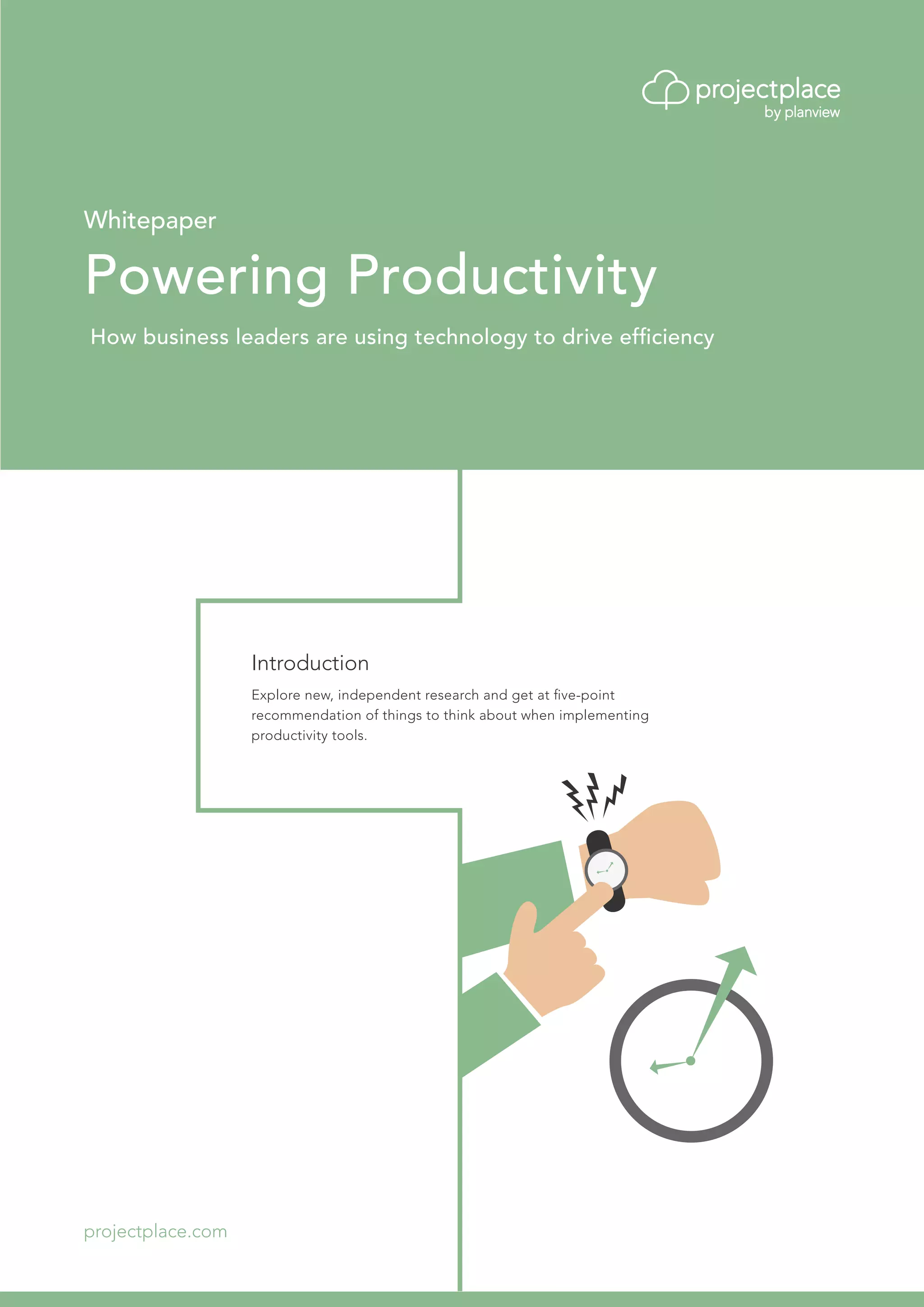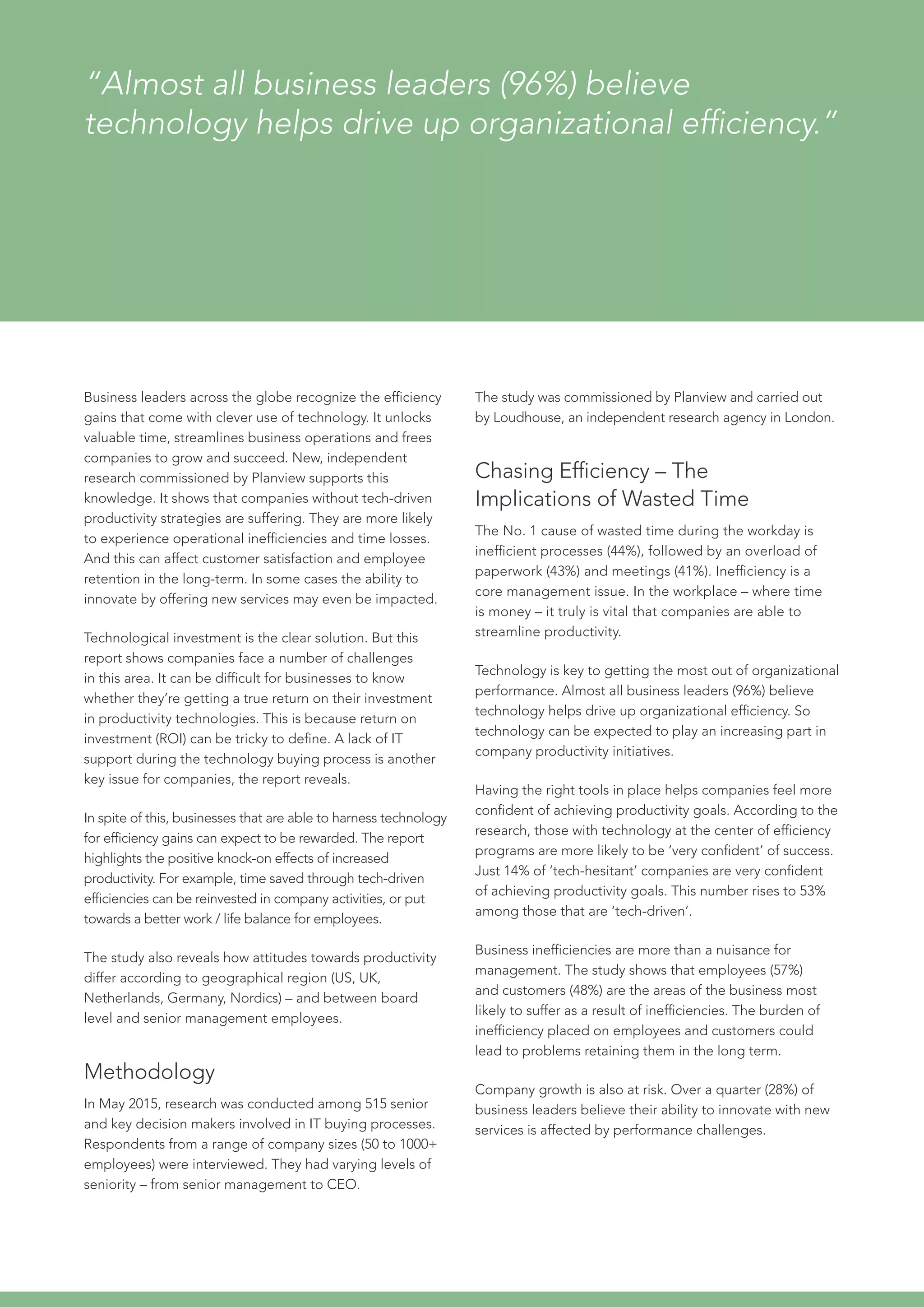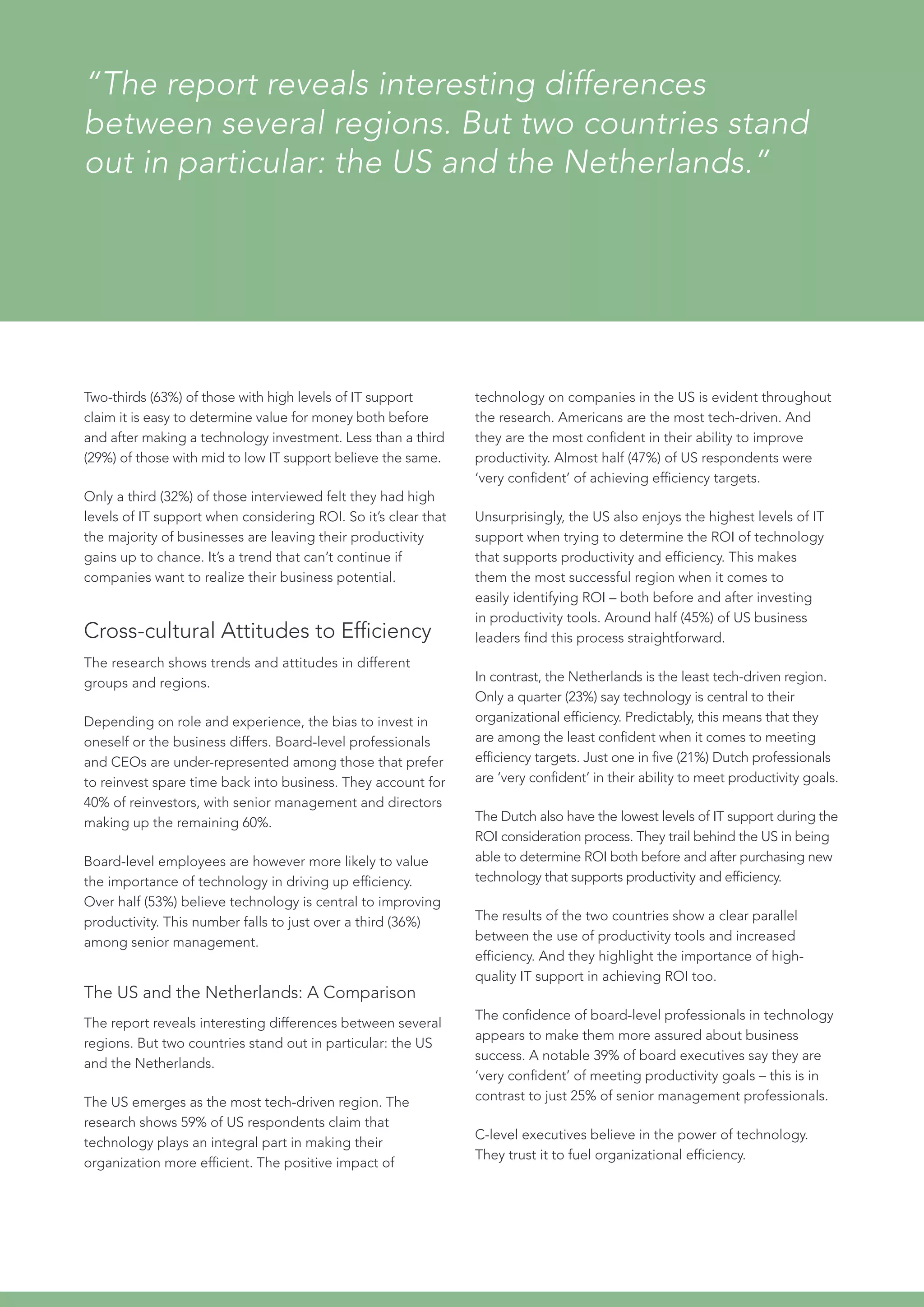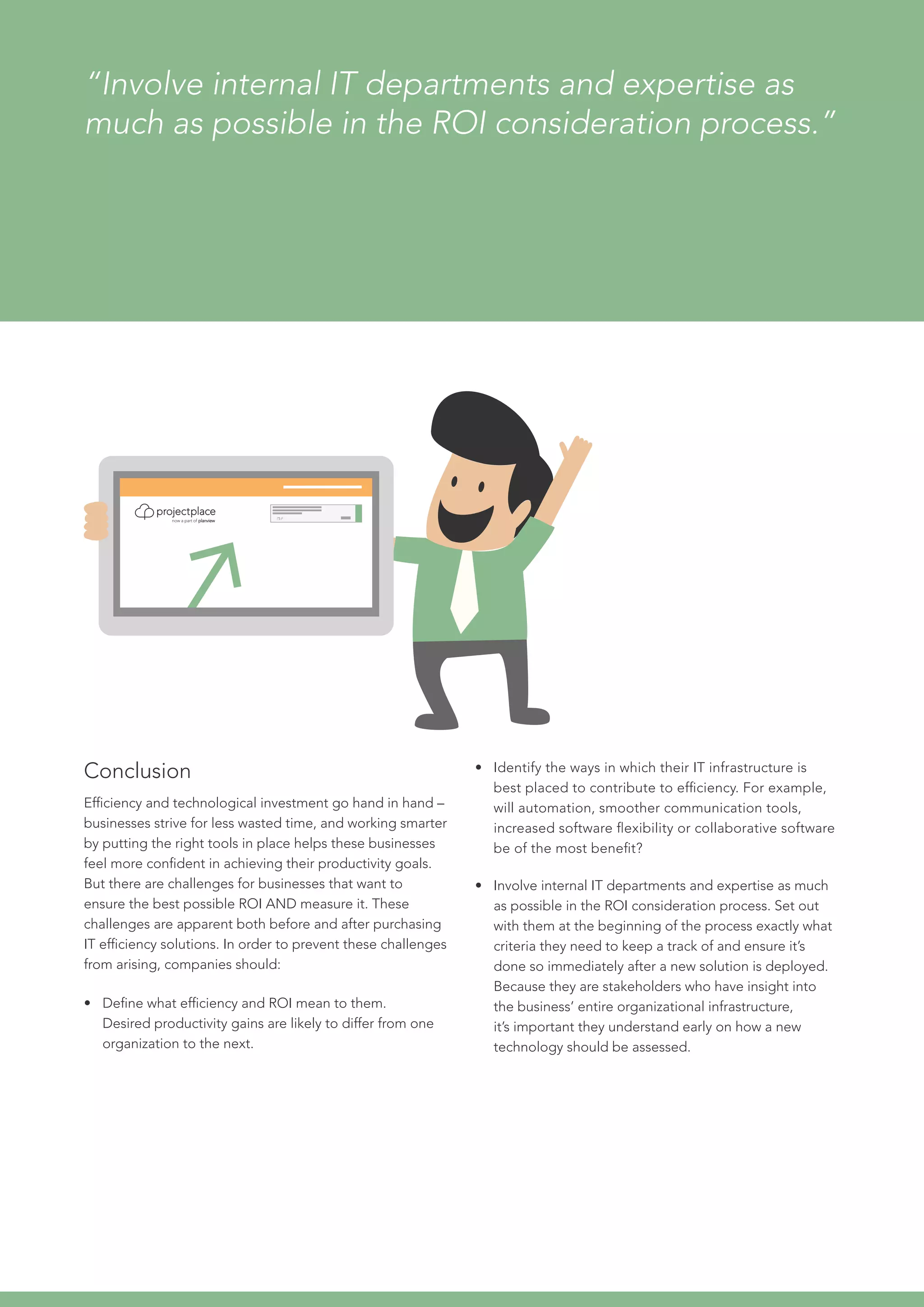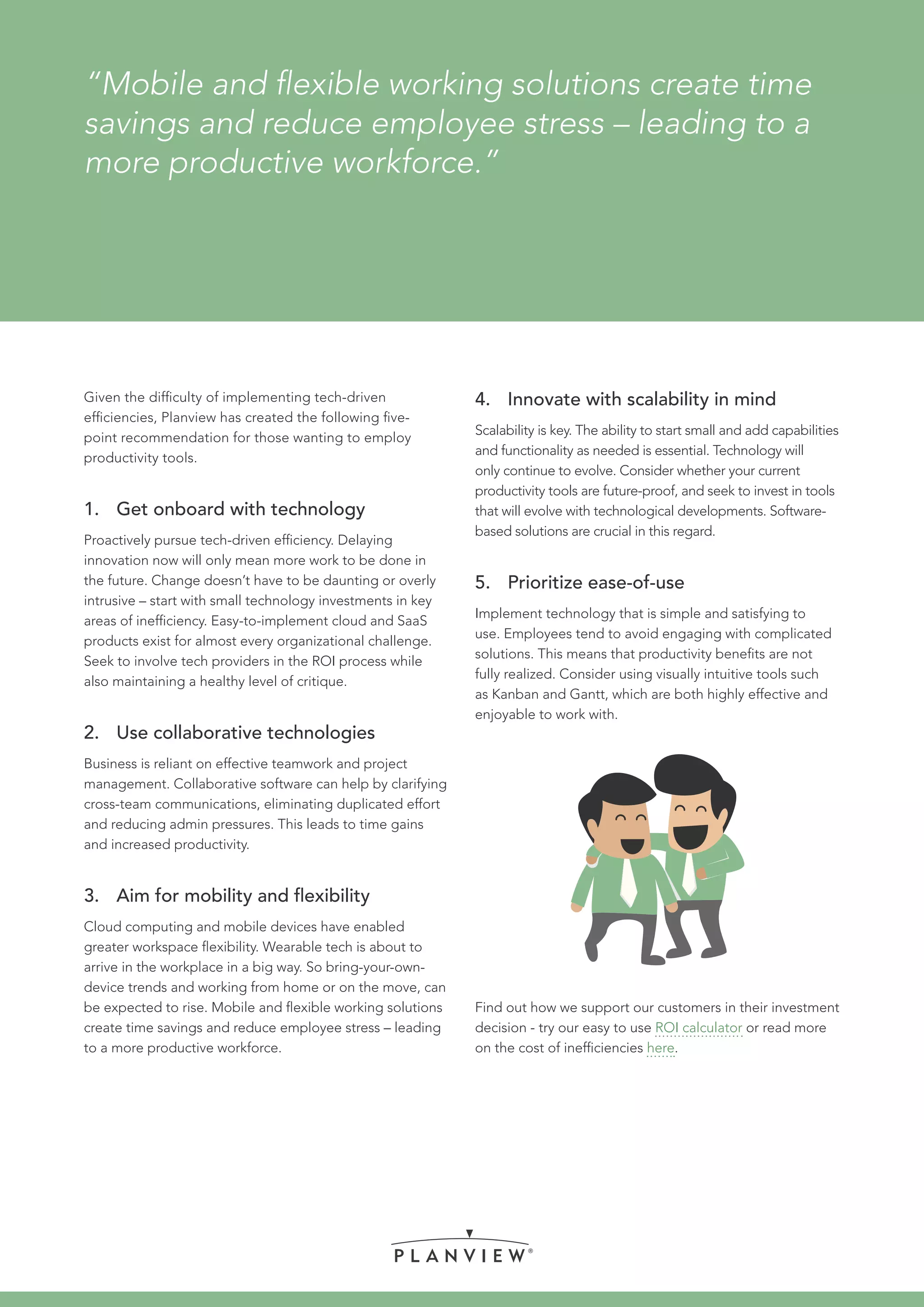This document summarizes the key findings of a research report on how business leaders are using technology to drive organizational efficiency. Some of the main findings include:
- 96% of business leaders believe that technology helps increase efficiency by saving time and streamlining operations.
- Companies that make technology central to their productivity strategies are more confident in achieving efficiency goals than those that are less tech-driven.
- The report found differences in attitudes across regions, with the US being the most tech-driven and confident, while the Netherlands was the least.
- Measuring return on investment for productivity tools can be difficult, but companies generally focus on time-related metrics like time saved and increased productivity. Companies with high IT support are
